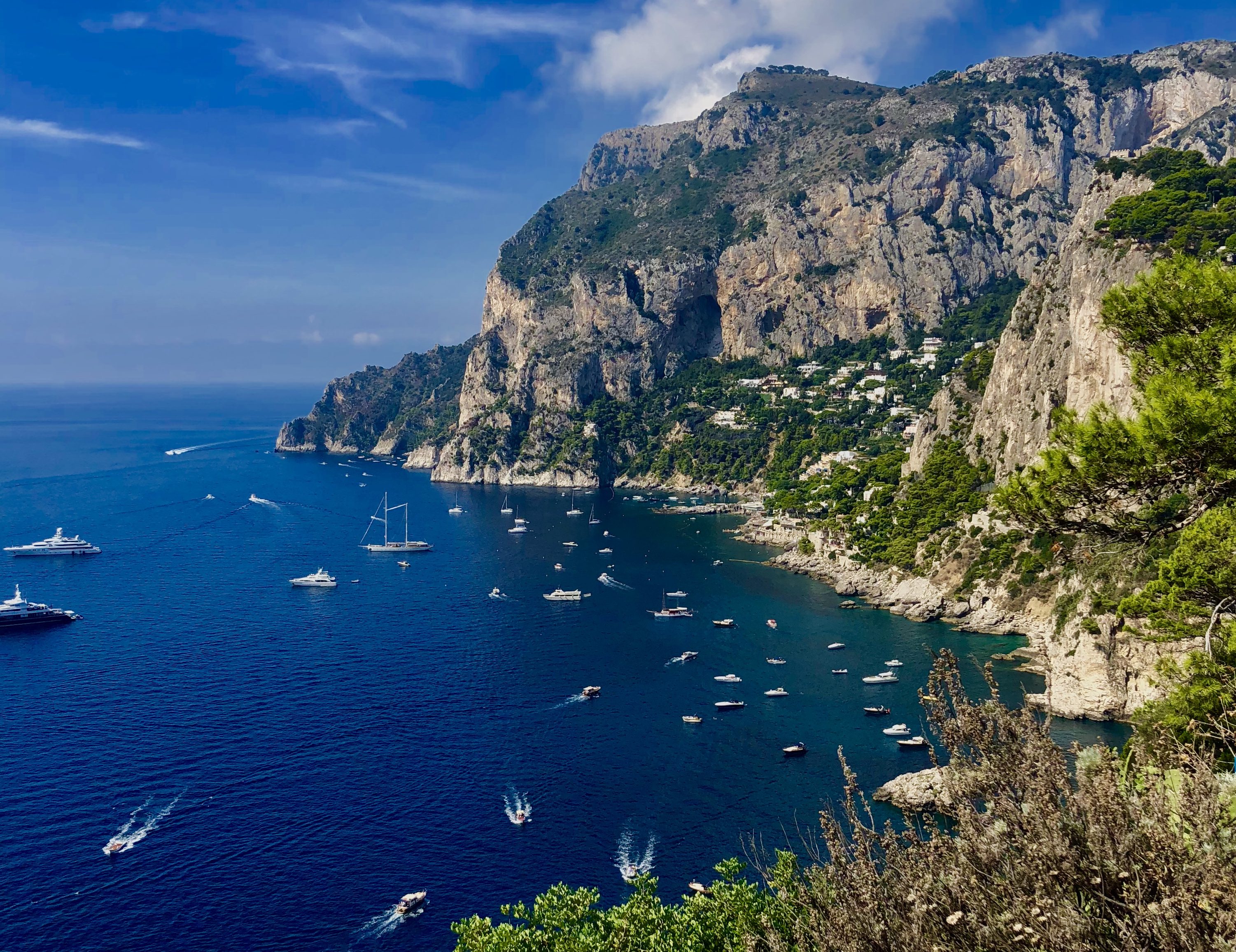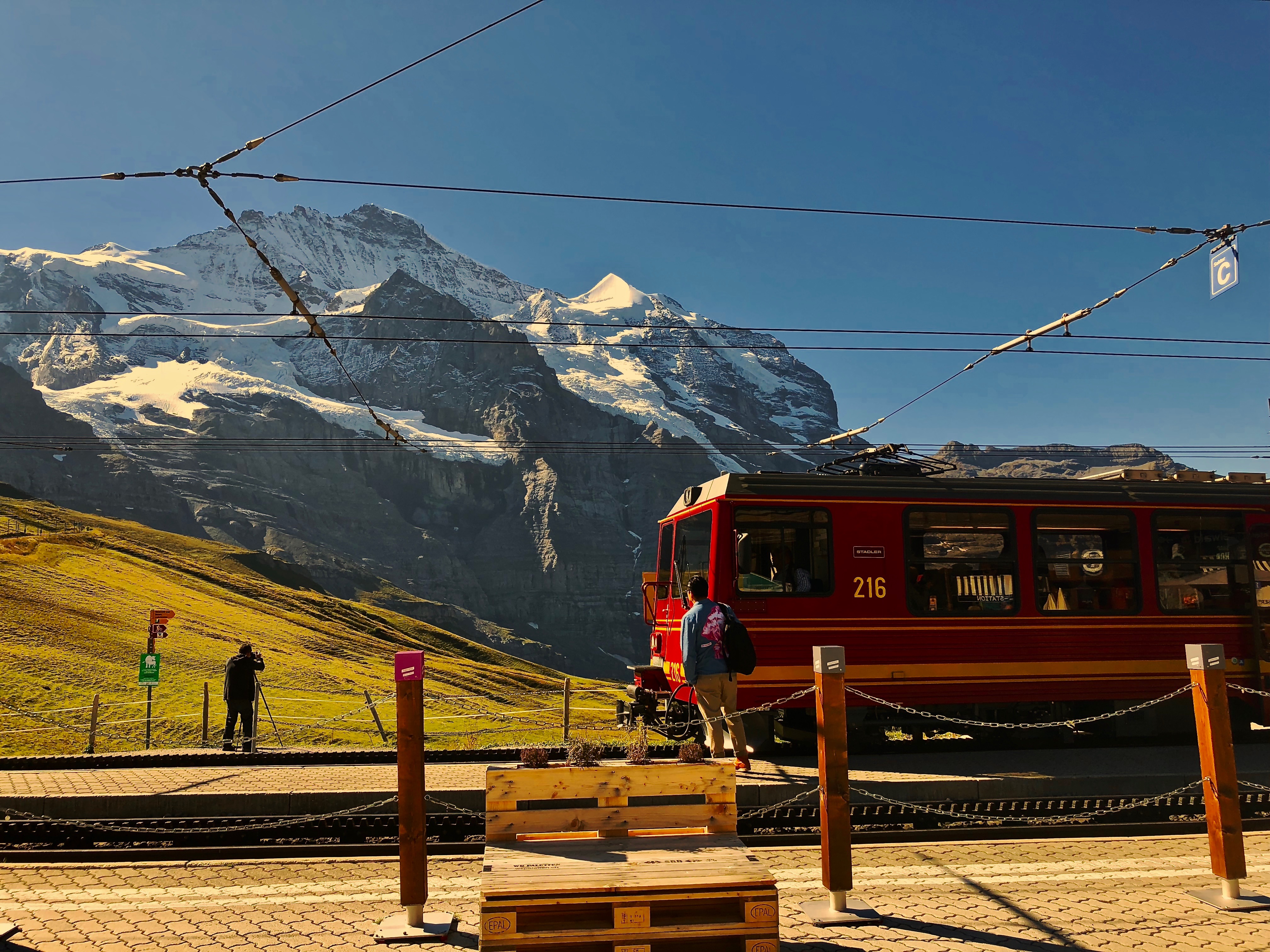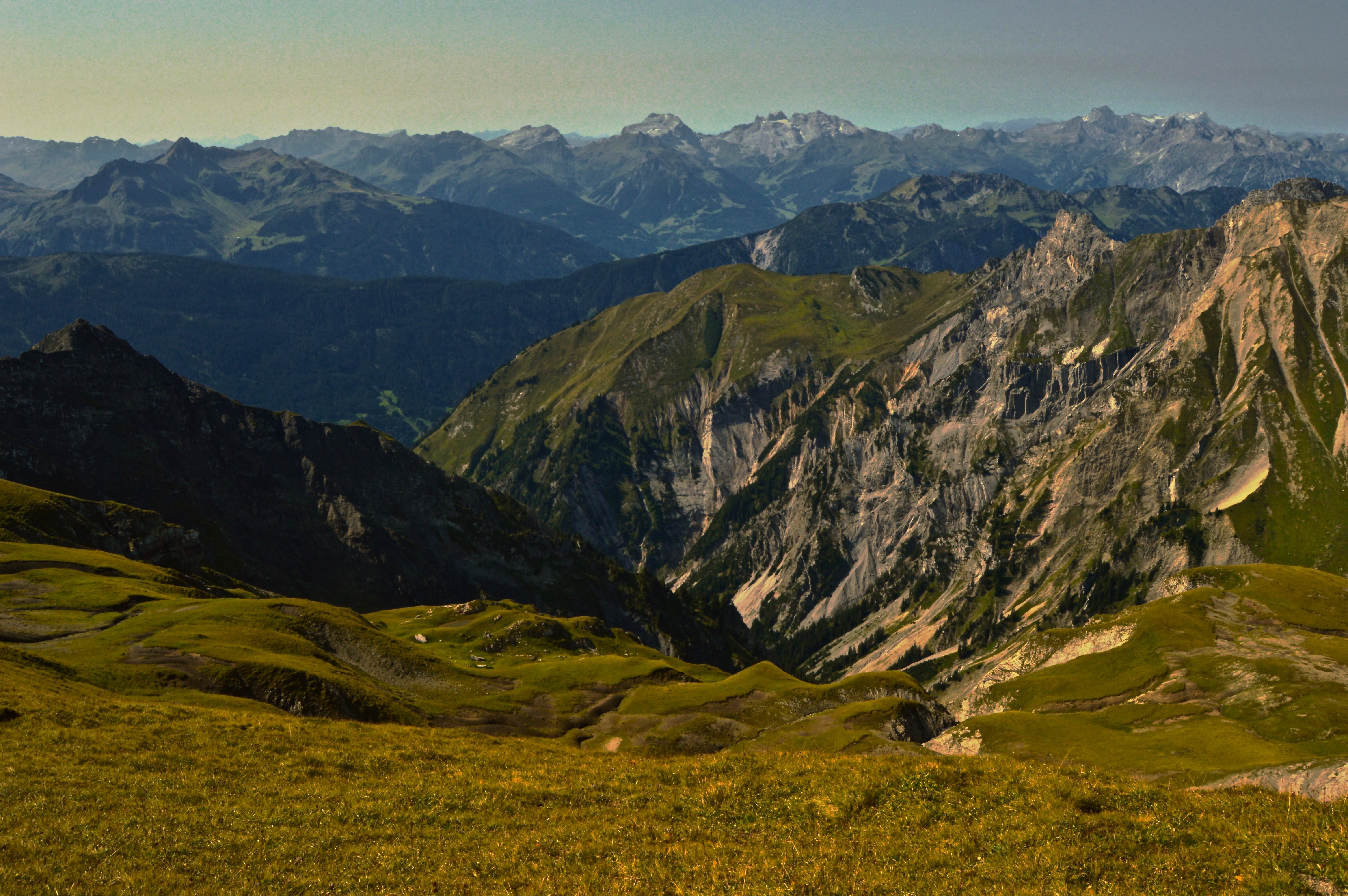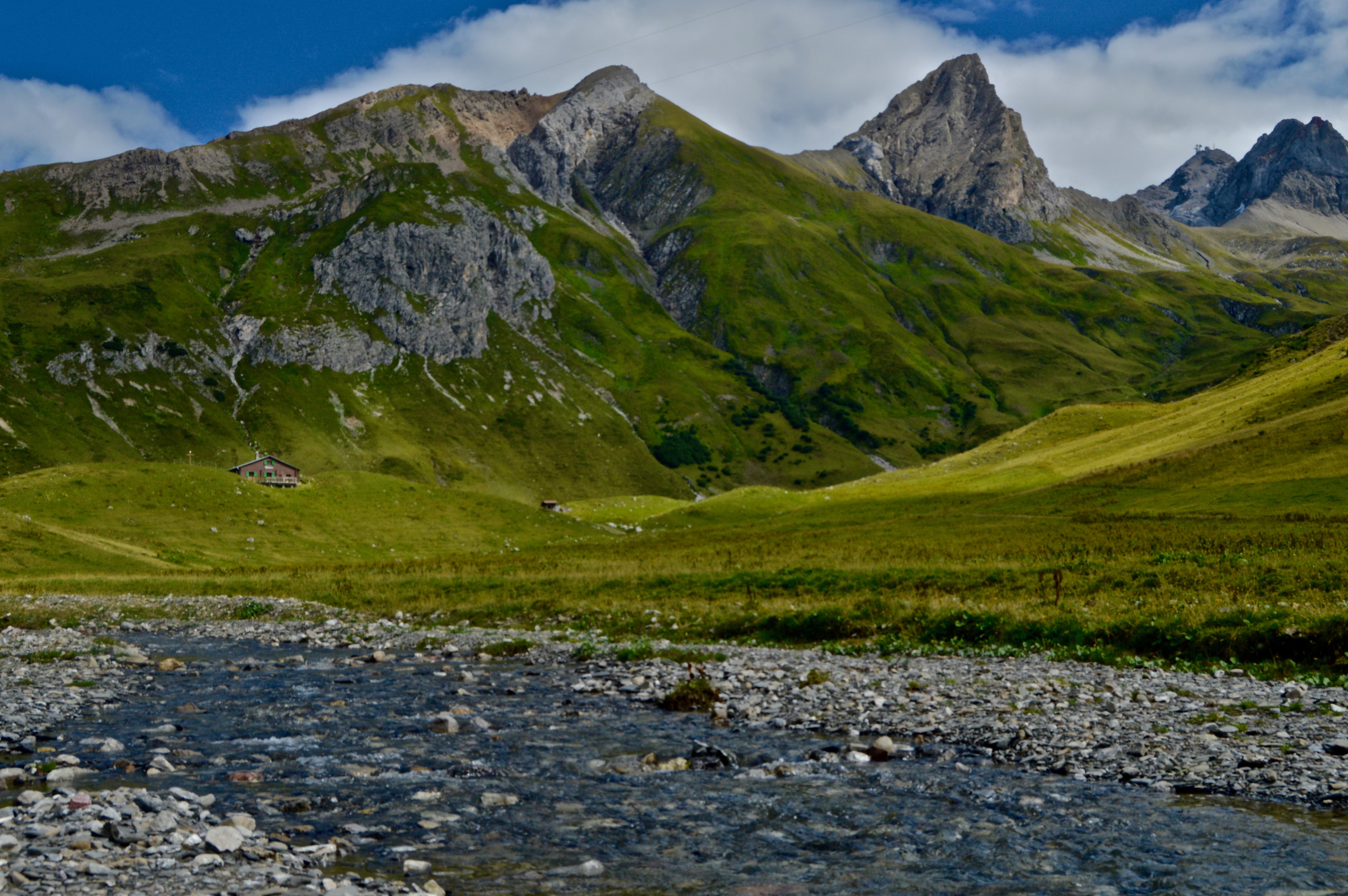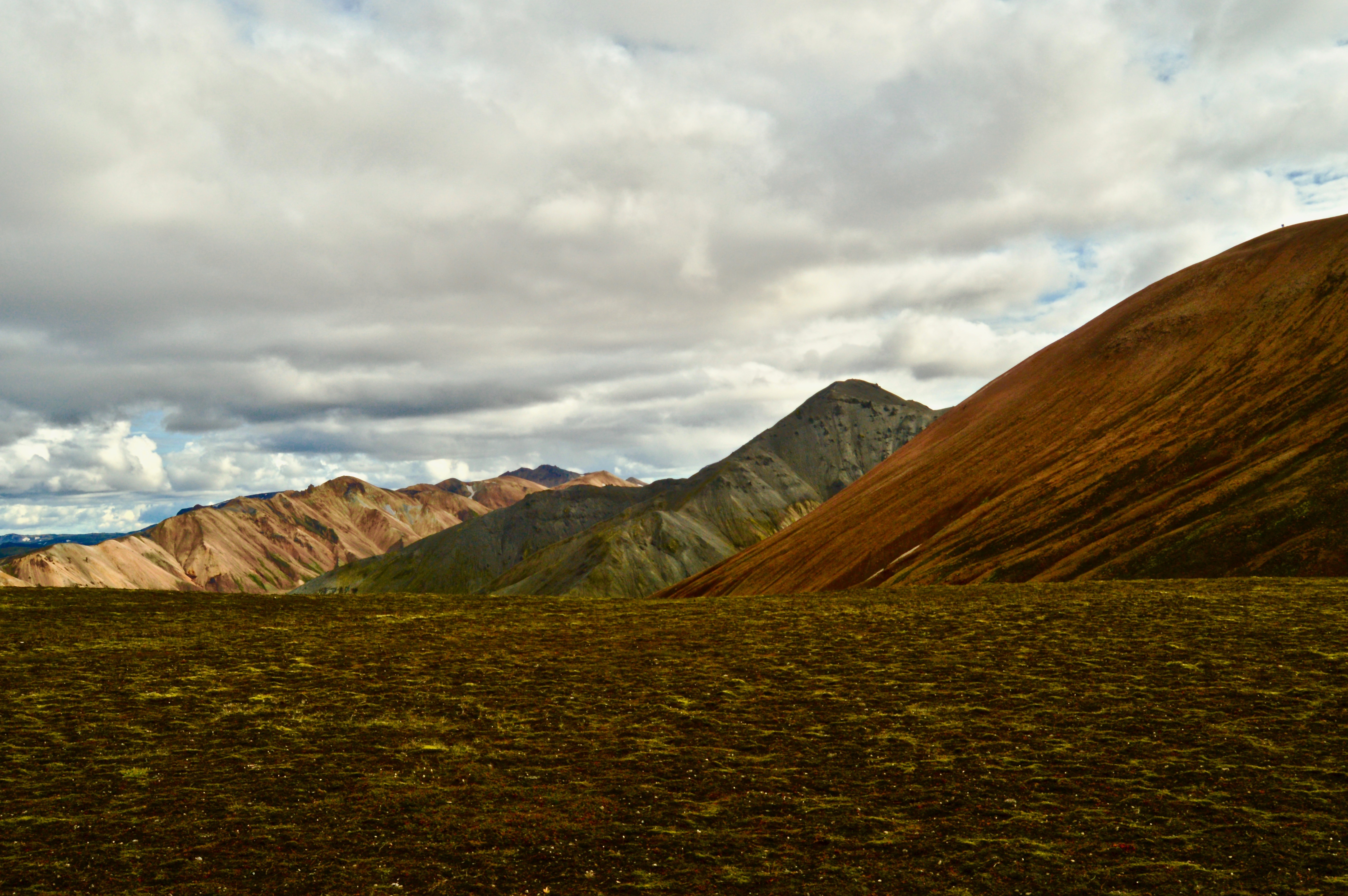There is something romantic about the canals of Amsterdam. Whether one is gliding along on a boat, strolling on the adjacent streets, or simply sitting on the stone bridges next to the calm rippling water, these bodies of water that act as the city’s arteries bring both beauty to the city and calm to the viewer.
Here are a few shots I took of different locations along the Amsterdam canals during my one week stay in the Dutch capital. All photos taken with iPhone 8.
Featured: The calm, glassy early morning water reflects the trees and homes that line this small canal.
Image 1: Vibrant flowers often line the bridges that cross over the canals.
Image 2: One of the city’s larger canals that runs in front of the Rijksmuseum.
Image 3: The sun sets over the center of the city, next to the central train station.
Oh, Italy–a land of good drink, even better food, significant history, and charming landscapes and cityscapes. Italy truly offers almost everything one could want in a travel destination. Unfortunately, I was only able to stay a week in the country, and only saw a small fraction of it. This is a place I could spend months traveling and still not see everything. Here are some highlights from my short, but worthwhile stay:
Rome
I was only in Rome three days, and despite being hungover much of the time, was still able to cover some of the main tourist attractions–namely, admiring the impressive architectural feat of the Colosseum, tossing coins in Trevi Fountain, and visiting the world’s smallest sovereign state: Vatican City.
Honestly, the Colosseum isn’t much more fascinating on the inside than it is from the outside (and viewing it from the outside is free), but the history behind the building is interesting to learn as it was the center of entertainment for the ancient city. Gladiator fights, battle reenactments, executions, and plays were just a few of the events held in the Colosseum. What makes the whole experience worth it is the ticket also includes entrance to the Forum, the center of ancient Rome that includes ruins of former government buildings, temples, and gardens. In addition, you can cheat the system and skip the line for the Colosseum tickets (up to two hours in the scorching sun) by buying tickets for both sites at the much shorter line for the Forum (took us about 10 minutes).


The Trevi Fountain is probably the most famous fountain in the world, and you will be able to tell as it is jam-packed with people at all times of the day. While you may have to fight for a good spot next to the water, making a wish and throwing a coin is a must-do ‘when in Rome’ and worth the couple minutes of chaos to check it off your bucket list.


The Vatican is an independent city-state located within the city of Rome and the smallest sovereign state in the world–both by population and area. It is the home of the Roman Catholic Church and ruled by the Pope. Also expect to wait in long, hot lines whilst visiting the Vatican, but the line moves fairly fast and we were in within 30 minutes. The highlight was walking up the steps to the dome at the top of St. Peter’s Basilica, which offers a 360 degree view of the entirety of Rome. Skip the line–and save a few Euros–by opting to walk the whole way up rather than take the elevator, but be ready to get your workout in. Also, it is not for those who get claustrophobic–the final staircase up to the top is in a tight enclosed space that you share with dozens of other sweaty people and no ventilation. However, if you are able to endure a few minutes of sweatiness and lack of oxygen, the views at the top are well worth it.

Sorrento Coast
My last four days in Italy were spent on the southern end of the peninsula in the Sorrento area. Using Sorrento as a home base, I took day trips to Capri, Pompeii, and Positano. While Sorrento is a worthy destination itself, these other locations (in addition to the Amalfi Coast which I didn’t have time to visit) are the real attraction and can be easily accessed from the Sorrento via ferry, train, or bus.
Capri was without a doubt the highlight of my Italy trip. A small island located just off the coast, Capri is just a short 30 minute ferry ride away from Sorrento. The ferry leaves every half an hour or so starting at 8am with the last boat back at 6:30pm. We got to the island around 10am and took the 6:30pm ride back, but if I were to do it again, I would have gotten to Capri even earlier as we easily could have spent another couple hours exploring the island. This was by far my most expensive day as it cost 38 Euro for a roundtrip ferry ticket, and everything on the island is very pricey as it is often frequented by celebrities and wealthy yacht owners, but the experience was well worth the price.
Colorful Italian homes perched along the islands steep hillsides and cliffs overlooked the clear, deep blue Mediterranean below. Fruit trees, grape vines, and vibrant flowers lined the narrow stone alleyways, enhancing the the warm air with a fresh citrus-like scent. In town, Gucci and Versace stores lined the streets, intermixed with seafood restaurants serving fresh catch of the day.

After exploring the town for a bit we took a bus over an incredibly windy and sketchy road built into the cliffside, over to the town of Anacapri on the other side of the island. My friend, and travel partner, Zoe, had heard about a chairlift that you can take to the highpoint of the island from Anacapri. This turned out to be absolutely epic as we rode a small, single-person chairlift that took us high above the island to some truly breathtaking viewpoints.




Instead of taking the lift back down, we decided to walk the steep, but short trail back to Anacapri. To save money, you could hike up to the viewpoint as well, but the chairlift was an enjoyable experience in itself and worth the 8 Euro ticket.
The next day, we took a train from Sorrento for about 3 Euro to Pompeii to explore the famous ruins there. I knew the story of Pompeii–how an eruption of Mt. Vesuvius had buried the city in ash and killed nearly all its inhabitants–but other than that, to be honest, my knowledge of the site was minimal and I didn’t quite know what to expect. While I found the Colosseum to be a bit underwhelming, Pompeii was the exact opposite. I was surprised by how large the city was, as it contained around 11,000 residents at its height, and the ruins are subsequently massive. What makes the ruins so incredible is the fact that the artifacts and buildings were removed from air and moisture since the city was buried under several feet of ash, thus, eliminating natural decay and erosion. As a result, many of the structures and artifacts are well preserved. The murals and paintings on the walls of homes are still vibrantly colored and detailed, as if they were painted a few years ago. Even some of the bodies were preserved, cementing their final moments in time.


Our last day in Italy, we took a cheap (2 Euro) bus ride to Positano, a popular coastal town and beach destination about an hour south of Sorrento along the Amalfi Coast. Positano is one of those postcard destinations characterized by colorful Italian style homes, long beaches, and a gelato stand seemingly around every corner. After several days of intense sight-seeing, and many, many miles walked, we spent the day at Positano relaxing on the beach and swimming in the sea. Swimming in the Mediterranean had always been a bucket list item for me, and one of my main goals while I was in Italy (aside from eating good food and drinking lots of vino, of course). The salt content is so high that I hardly had to use any effort to float. I lied on my back, zero-gravity style, floating at the top of the warm sea, watching clouds roll by for several minutes. It was a splendid week in Italy, a place I intend to visit again in the future, to see other parts of the country I missed this time, but mostly to eat more pasta and pizza.
Over my ten days spent in Switzerland, I had a difficult time comprehending the jaw-dropping, eye-popping, awe-inspiring immensity of the Swiss Alps. From iconic peaks like the Matterhorn, Eiger, Mönch and Jungfrau, to the sleepy, quaint, frozen-in-time villages that dot the hillsides in their shadow, the landscapes of Switzerland were magic to the eye. Here are a few of my favorite shots during my stay:
Featured: The high alpine lake Stellisee reflects the image of the Matterhorn on a clear sunny morning.
1. The sun sets over Zermatt as the Matterhorn looms above.
2. Jungfrau, one of the main summits of the Bernese Alps, and the highest peak of the massif that includes Mönch and Eiger.
3. Mönch sits adjacent to Jungfrau, towering over Grindelwald below.
4. A paraglider prepares to land after soaring over the Lauterbrunnen valley.
5. The village of Mürren exemplifies the best in traditional Swiss architecture with amazing mountain views.
6. A small farmhouse sits on the slopes above Grindelwald with a view of the valley.
Lech, Austria is a picturesque tourist town situated at the base of the Arlberg massif of the Austrian Alps. Known more as a winter ski destination, Lech, and the surrounding towns, still offer ample opportunities for recreation in the summer months as well. I spent my week in Lech hiking several of the many trails in the area, ranging from “easy valley hikes” to “very difficult mountain hikes.” A sophisticated bus and gondola/chairlift system provides easy access to the high elevation trails, saving the legs a couple thousand feet of climbing.
The best part–in my opinion–of hiking in Austria (and the Alps in general) is that the majority of trails leads to a mountain hut fit with electricity, flush-toilets, warm food, cold beer, and of course, scenic views. While not exactly a true ‘wilderness experience,’ having luxury is nice every now and then. There certainly aren’t many places in the States that offer such deluxe accommodations on a hike. For meat lovers, most huts have the traditional dishes of sausage and sauerkraut, or my personal favorite, Wiener schnitzel, on the menu. For the best Wiener schnitzel you’ll ever have (Disclaimer: I did just hike 11+ miles, gaining and losing 2000 feet in elevation, and at that point, anything would have tasted delicious), go to Ravensburger Hut at Spullersee. The tender, breaded and golden-fried pork steak, accompanied by fresh cranberry jam, the crispiest, herb-topped, melt-in-your-mouth potato fries, and a cold Austrian lager to wash it all down, was the perfect way to end a long, demanding hike.
I hiked and exercised a lot in Austria, but I also ate so well I’m not sure if I lost or gained weight during my time there! Here’s a picture of the Wiener schnitzel below to wet your appetite…

I’m going to start out by mentioning that I try not to overuse the word beautiful, instead reserving it only for things I truly find beautiful, namely Natalie Portman, a plate of fresh sashimi, Ken Griffey Jr.’s left-handed swing, and now Iceland. Even though I only spent five days in Iceland and saw hardly a fraction of the country, the landscapes I were able to visit completely blew me away. From majestic waterfalls spilling over cliff sides, to volcanic black sand beaches, immense glaciers, and rainbow colored ridges, Iceland boasts a combination of natural landscapes that cannot be found anywhere else on Earth. This is due to the unique characteristics that have shaped the island, including volcanic activity, a latitude equal to parts of Greenland and Alaska, and the Gulf stream current that flows from the Gulf of Mexico up to the North Atlantic keeping Iceland’s climate more moderate than it otherwise would be.
The highlight of my short-lived trip was hiking in the central highlands, deep in the island’s interior, which I describe here. Enjoy!
Bus from Reykjavik to Landmannalauger
We caught a bus from the Harpa Concert Hall in downtown Reykjavik to Landmannalauger base camp with the Sterna Travel company. The bus departs Reykjavik at 7:15am and returns around 10pm (it’s a loooong day, but well worth it!). The drive takes about four-and-a-half hours, of which the last hour is spent on a dirt road that travels across an other-worldy landscape left in the wake of several eruptions from nearby Hekla volcano (the most active volcano in Iceland) and fords several river crossings (quite an experience in a 60 passenger coach bus!). The surface is covered by a deep black mixture of lava rock, sand, and ash, and prohibits the growth of any plant life, save for a few mosses and grasses. As a result, hardly any life survives in Iceland’s interior–flora, fauna, or human. Although, it is common local knowledge that trolls inhabit the hills and will capture and eat you if you wander off too far…


Landmannalauger Base Camp
At noon, we arrived in Landmannalauger, located in the Fjallabak Nature Reserve and starting point for many hikes the area. The camp has a backpacker hut, campground, washrooms, and a natural hot springs, as well as information for the various hikes. There are several popular day hikes, ranging from easy strolls to climbing steep peaks, and a multi-day through hike on the Laugavegur trail. We decided on an intermediate four hour (5-6 miles) hike that climbed Mt. Brennisteinsalda.


Hiking
The hike we went on took us across lava fields, past geysers and geothermal springs, over glacial valleys, up the mountain, and down through a river canyon before ending back at the camp. We started along a path that winded through an immense lava field, where bright mossy Dayglo green contrasted sharply against the volcanic obsidian black. Sickly-grey glacial streams serpentined through the flat valleys below, like snakes in a sandbox. Colorful hills of reds and greens, painted by acidic sulfur and silica, rolled beneath a backdrop of snow covered peaks. Mt. Brennisteinsalda was the most brilliant of these painted peaks as a rainbow of loose rock spilled from the summit down to the valley below. The climb up to the summit was steep, but worth the reward of a 360 degree panoramic view of the area. We were extremely lucky with the weather as clear days are hard to come by in Iceland and we were able to see from horizon to horizon.



For a day trip, this hike was the perfect length and offered views of all the best Iceland has to offer. I am hoping to make it back to the country soon to hike and photograph even more.











